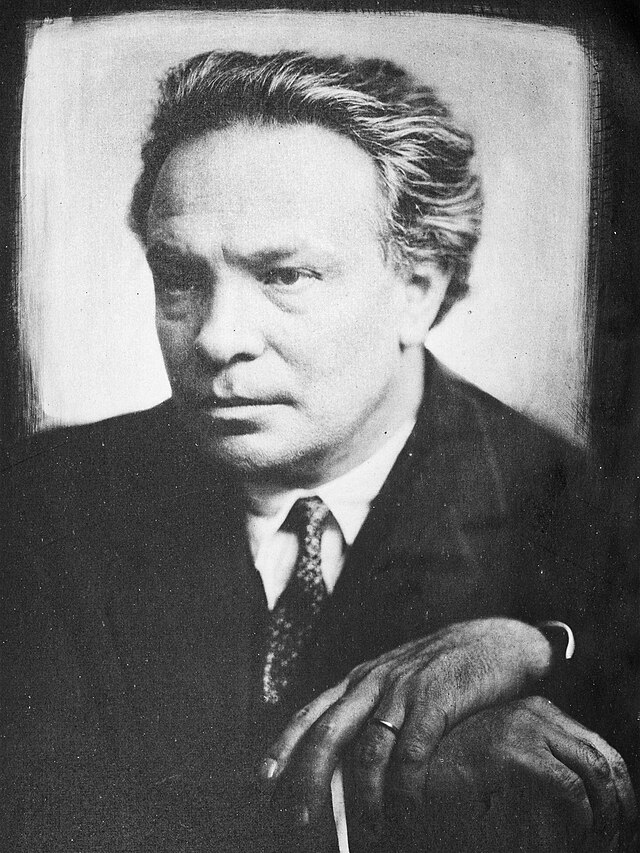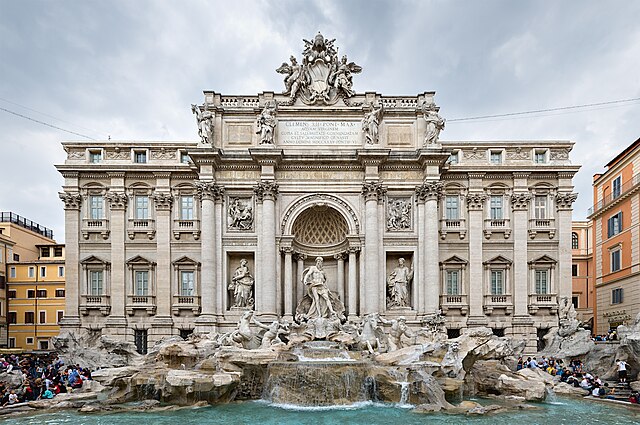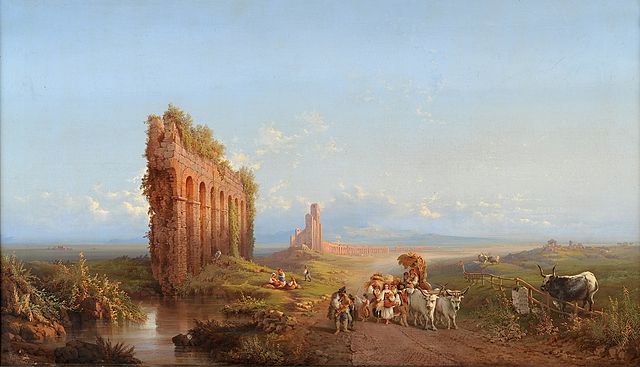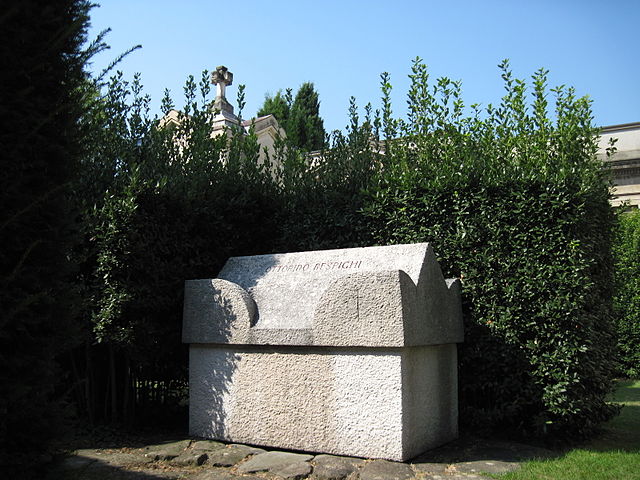
April 4, 2024
“Nature As a Point of Departure”: Respighi’s Pines of Rome
Take an enchanted journey through the City of Seven Hills by joining the Houston Symphony and guest conductor Fabien Gabel on May 2, 4 & 5. These concerts will feature the first two installments of Ottorino Respighi’s beloved Roman Triptych, Fountains of Rome and Pines of Rome, plus the dazzling virtuosity of pianist Alexandra Dariescu, who will shine in Grieg’s Piano Concerto. Be sure to head up to the Jones Hall round bar after Saturday’s performance for a special Encore After Party. All you need for admission is your concert ticket.
Renaissance Man
Ottorino Respighi (1879–1936) is one of the most significant, if not overlooked, Italian composers of the 20th century. Born to a musical and artistic family in Bologna, Respighi’s proficiency as a student and performer gained him the position of principal violist in the Russian Imperial Theatre's orchestra, where he studied composition under the composer Nikolai Rimsky-Korsakov. Upon returning to Italy, Respighi worked as a teacher, musician, and transcriber before focusing primarily on composing. His music gained him recognition across Europe and
across the Atlantic, where he performed from Carnegie Hall to Rio de Janeiro. Respighi’s musical influences range from the ancient Italian and medieval church music of which he transcribed to the richly detailed programmatic music of Richard Strauss.
Failure and Resurgence
Fountains of Rome was meant to premiere in 1916. However, the conductor Arturo Toscanini chose selections from Wagner’s Ring cycle for the first half of the program This selection, in the middle of the First World War, caused a riot among its Italian audience, leading to the second half of the concert being cancelled
Fountains of Rome would premiere the next year under conductor Antonio Guarnieri to a lukewarm reception. When Toscanini picked up the piece again in 1918, Respighi was so hurt by its failure thus far that he did not even bother to attend. What Respighi missed was an ecstatic reaction that catapulted him to international stardom.
On Fountains of Rome, Respighi wrote:
In this symphonic poem the composer has endeavored to give expression to the sentiments and visions suggested to him by four of Rome’s fountains, contemplated at the hour when their characters are most in harmony with the surrounding landscape, or at which their beauty is most impressive to the observer.
This programmatic approach would continue into the triptych’s next installment, Pines of Rome.
“A fantastic vision of past glories”
Pines of Rome is the second of Respighi’s three tone poems about the city of Rome, composed between Fountains of Rome and Roman Festivals. Respighi would again write in the third person regarding the Pines of Rome American premiere:
While in his preceding work, Fountains of Rome, the composer sought to reproduce by means of tone an impression of Nature, in Pines of Rome he uses Nature as a point of departure, in order to recall memories and vision. The centuries-old trees which so characteristically dominate the Roman landscape become witnesses to the principal events in Roman life.
The tone poem’s vibrant use of color and instrumentation produce four scenes in four movements. “The Pines of the Villa Borghese” depicts a scene of children playing. As Respighi’s original program says, “They twitter and shriek like swallows at evening, coming and going in swarms.” This movement displays a Stravinsky-like ability to utilize the full orchestra while remaining light and airy.
“The Pines Near a Catacomb” sets a more solemn tone as muted horns play music reminiscent of the Gregorian chants that Respighi and his wife, Elsa, were fond of. “The Pines of the Janiculum” depicts a nocturnal scene with a long, tranquil clarinet solo marked come in sogno (as if in a dream) over velvety strings that call to mind the dreamlike atmosphere of Debussy’s Prelude to the Afternoon of a Faun. Most remarkably, this movement incorporates electronics into orchestral music by using a recording of an actual nightingale.
The final movement, The Pines of the Appian Way, calls for six “buccini.” These old Roman trumpets would not possibly be able to play the notes in the score, so orchestras use flugelhorns or French horns to show “the army of the Consul burst forth in the grandeur of a newly risen sun toward the Sacred Way, mounting in triumph the Capitoline Hill.” Respighi captures this scene by ratcheting up the tension until the full orchestra, with as many as 20 brass players, bursts forth with an earth-shattering final coda.
From Archaic to Advanced
Respighi’s musical influences went as far back as antiquity and the Middle Ages. He wrote a string quartet, Quartetto Dorico, in the Dorian mode, used from the Ancient Greeks to the Byzantine church, and composed works based on early Christian plain chant. Respighi also joined a group of Italian composers in signing a manifesto denouncing Schoenberg and the 12-tone music gaining popularity at the time. But while Respighi may have been influenced by the past, his radiant use of orchestration, on full display in Pines of Rome, shows a composer looking to the future as well. From Vivaldi’s The Four Seasons to Beethoven’s Pastoral Symphony, Western classical music has a long history of incorporating bird call into musical forms. Respighi’s use of an actual nightingale recording (Gramophone Record’s "Song of a Nightingale, No. 2" from disc No. R. 6105, to be exact) was an innovative step in the use of electronics in music. The sometimes-striking similarities to other innovative composers such as Holst and Stravinsky show a composer who looked ahead as much as he looked back. It is only fitting that his famous trio of tone poems are inspired by a city that is both ancient and modern.
Respighi’s Bequest
Shortly after Respighi’s death, Elsa wrote, “I live because I can truly still do something for him. And I shall do it, that is certain, until the day I die.” Elsa would outlive her husband by nearly 60 years, championing his work through donating manuscripts, letters, and photographs until her death, just short of her 102nd birthday. Respighi’s legacy is often overshadowed by the composers he has been frequently
compared to. In fact, these parallels have led many to criticize Respighi for being too derivative and lacking a unique style of his own. One thing not up for debate is Respighi’s gift for orchestration. In Pines of Rome, he uses instrumentation and color to bring to life his vivid descriptions of children at play, mysterious catacombs, a nocturnal reverie, and the ancient glories of the Appian Way. Respighi brilliantly achieves bringing music to life and bringing life to music. —David Early










